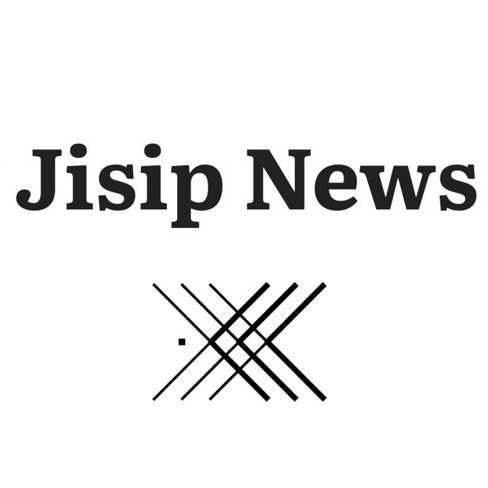SECRETARY BLINKEN: Well, good morning, everyone. Let me first say that when Rahm started to talk about mayor of Chicago, I thought he was announcing his candidacy for Hiroshima. (Laughter.) So if the mayor’s here, watch out.
But Mr. Ambassador, Rahm, thank you for helping make this Memorandum of Cooperation and so many partnerships that we’re launching today – thank you for making it happen. We have known each other for a number of decades. I can say this from experience: When the ambassador sets his mind to something, you may as well just go along with it – (laughter) – because it’s going to happen.
But to his point – and Madam Minister, I’m so grateful to you for your partnership, for your vision in leading this joint effort, one of the smartest investments that we can make in the national and economic security of our countries. We spend a lot of time doing the urgent, maybe less time doing the genuinely important, and this is the genuinely important. Bringing together some of our brightest minds, our best universities, our boldest companies, offers incredible promise for the future.
And as the ambassador said, it’s hard to know standing here today all that this is going to produce. But I can say with great confidence that it’s going to stand both of our countries – and actually the world – in very good stead. This is an extraordinary collaboration that we’re initiating today. I couldn’t be more excited to be a part of it.
And to all of the leaders who are here from U.S. and Japanese industry, from educational institutions, kicking off these new initiatives today from IBM, from Google, from Micron, from Tokyo Electron; Universities of Tokyo, Hiroshima, Tohoku, Chicago, Purdue, Boise State – this is a extraordinary list but an extraordinary group of institutions, of individuals – partners, now, in this endeavor. And I really want to thank you for making this happen and thanking – and thank you as well for making up such an incredible team.
The collaborative efforts that we’re launching today are about improving the lives of our people. That’s fundamentally what it comes down to – now, but also for generations to come. We all know that semiconductors power everything from the devices we all carry in our pockets to the artificial intelligence that’s reshaping the production of knowledge. They are the foundation upon which future innovation will be built, from quantum computers and biotechnology to precision medicine to renewable energy.
Maintaining our shared edge in these technologies is not just crucial for expanding opportunities and delivering tangible benefits for our people. It will also allow us to shape the rules and norms around emerging technologies so that they’re developed and used in ways that reflect the values that we share.
And it’s not just what we’ll work on that makes these new partnerships critically important, but how we’ll work together. We’re investing in the best ecosystems for innovation, bringing together extraordinary research universities, extraordinary companies, and our governments. We’ll be stronger, we’ll be more nimble, we’ll be more dynamic, because the United States and Japan will build these synergies in unison rather than in isolation. And I’m especially excited by the young minds who are going to be brought to bear on this partnership. That to me is one of the most inspiring parts of this initiative.
We know this formula delivers because collaboration across our borders and sectors has already yielded some of the world’s most transformative breakthroughs. Just to cite two examples for this morning out of so many that we all know about, the first is from 1986, when America’s Motorola combined its microprocessor with Japan’s Toshiba’s design and manufacturing technology, producing one of the earliest and biggest leaps in semiconductor technology.
The second started back in the 1950s, when, after finishing his PhD at the University of Tokyo, a Japanese meteorologist, Manabe Syukuro, went to work at the U.S. National Oceanic and Atmospheric Administration. Over the coming decades, he and American colleagues developed the first models that were used to simulate climate change, for which he was awarded the Nobel Prize in physics in 2021. Even as he pursued his own research, Manabe – who is now 91 years old – has mentored generations of rising American and Japanese scientists at Princeton and Nagoya Universities.
Ultimately, that’s what this Memorandum of Cooperation In Education is all about. It’s not just maintaining but expanding the pipeline of rising American and Japanese thinkers, innovators, technologists, so that they can shape emerging technologies for the good of our nations, for the good of the world.
So I am confident that no one can do it better together than our countries, our institutions, our people, and Rahm and I – well, maybe not Rahm – I’ll be long retired when we get a chance to see the extraordinary innovations that I know this partnership is going to produce. So thank you all so much for being part of this, and we very much look forward to seeing the future that we’re going to be building together. Thank you all very, very much. (Applause.)
MINISTER NAGAOKA: (Via interpreter) Good morning, distinguished guests. I am Keiko Nagaoka. I am the minister in charge of education, science, and technology. So shortly after my (inaudible), Ambassador Emanuel had his (inaudible). So he has an office in the Ministry of Education, but that is not true. But I think it is worth a office because he has been visiting us so many times and we have been holding so many frequent meetings, so I think his visit deserves that we give him an office.
So Secretary of State Antony Blinken and Ambassador Rahm Emanuel and distinguished guests from U.S. and Japan universities and representatives of (inaudible) companies, good morning. Today I am truly grateful to sign the Memorandum of Cooperation together with Secretary of State Antony Blinken. So this is the first MOC to be concluded between the Ministry of Education, Science, and Technology and the Department of State. A reference was made to this MOC during the U.S.-Japan summit meeting held earlier. We anticipate that the signing of MOC would contribute greatly to the expansion of cooperation in education between the U.S. and Japan, present and into the future.
Last week, during the G7 education ministerial meeting which I chaired, G7 nations which share the democratic value of freedom, peace, and rule of law have reached agreement to promote cooperation in education. So the declaration was adopted, and only after the adoption of the declaration we were able to start a concrete action through the signing of this MOC, and I’m truly grateful for that fact.
Going forward based on this MOC, our ministry and the Department of State will strengthen cooperation in the secondary and higher education, as well as in research. And at the same time, we will start holding policy dialogue between the two agencies on a regular basis.
As for the Ministry of Education, Science, and Technology, we hope to further promote exchange in education between the U.S. and Japan. Based on the second set of the recommendations, titled Initiative to Promote Overseas Study of (inaudible) Relations Who Will Shape the Future, which as known as the J-MIRAI project – this was compiled in the Education Future Creation Conference in April. We hope to further accelerate our cooperation.
In addition, along with the MOC, I welcome the conclusion of partnership agreements by the companies and universities of both nations on quantum and semiconductors, both of which are strategically critical to the U.S. and Japan. Under these partnerships, we have high expectations that the cooperation of the U.S. and Japan will further evolve in these critical sectors and will foster talent with skill sets that can shape the next generation. And I hope that such cooperation will further expand moving forward.
As the Ministry of Education, Science, and Technology, we wish to cooperate closely with the Department of State. I would like to ask your kind support and cooperation on this matter so that we can further strengthen our cooperation in education sectors and promote educational exchange. And needless to say, with the conclusion of MOC, the U.S. embassy officials – and not to mention Ambassador Emanuel – I would like to offer – express my gratitude for the U.S. embassy officials and Ambassador Emanuel. With that, I would like to conclude my remarks. Thank you very much. (Applause.)
(The memorandum was signed.)
Official news published at https://www.state.gov/secretary-antony-j-blinken-and-japanese-minister-for-education-culture-sports-science-and-technology-nagaoka-keiko-at-a-memorandum-of-cooperation-on-education-signing-ceremony/


